HIGHLIGHTS
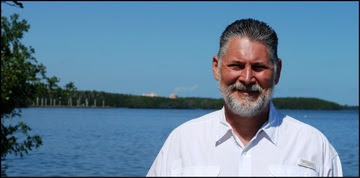
NOAA Appoints Clay Porch as New Southeast Fisheries Science Center Director
NOAA announced the appointment of Dr. Clay Porch as the new Science and Research Director for NOAA’s Southeast Fisheries Science Center. With more than 25 years of experience at NOAA Fisheries, Dr. Porch will lead the Science Center’s mission to research living marine resources in the Atlantic Ocean, Gulf of Mexico, Caribbean, and international waters.
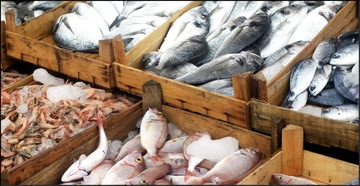
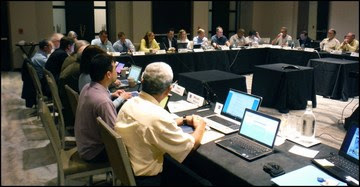
Final List of Foreign Fisheries Now Available
NOAA Fisheries announced the publication of our final List of Foreign Fisheries. An essential component of the import provisions of the Marine Mammal Protection Act, the list identifies and classifies foreign commercial fishing operations that export to the United States based on the frequency of marine mammal mortality and serious injury in those fisheries.
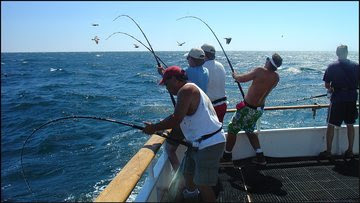
Recreational Angler Survey Calibration Workshop
On the Atlantic and Gulf coasts, NOAA Fisheries’ Marine Recreational Information Program gathers catch information through the Access Point Intercept Survey. The program revised its survey methods in 2013, and now NOAA Fisheries is convening a peer review workshop to assess the statistical approach to recalibrating the survey data. The public is invited to attend or listen remotely March 20–21.

New Coastal Aquaculture Planning Tools
NOAA’s Coastal Aquaculture Planning Portal, first launched in 2016, has nearly doubled its inventory of unique tools and resources for coastal managers, planners, and those in the industry who are interested in the development of marine aquaculture in the United States. The portal now provides 87 tools and resources to assist with aquaculture development at various scales.
Alaska

Alaska Halibut Fishermen Gear Up for New Season
From Southeast Alaska to the Bering Sea, Alaska halibut fishermen are gearing up to head out to sea as the 2018 halibut season opens at noon on March 24. Out of concern for the health of the halibut stock, the 2018 Pacific halibut catch limits are lower and charter management measures are tighter than last year.
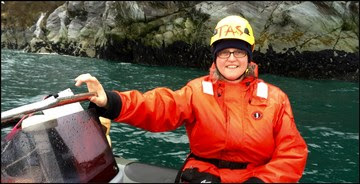
NOAA’s Teacher at Sea Program Makes an Impact
Educators who participate in NOAA’s Teacher at Sea Program gain real-world research experience working at sea with NOAA scientists. A new video shares one story about how a teacher in rural Alaska shares her experience with her students.
West Coast

Sea Lion Breeding Shifts North to San Francisco Bay Area Islands
For the first time, researchers tracking the population of California sea lions have documented hundreds of breeding sea lions shifting north from the Channel Islands off Southern California to small islands near the San Francisco Bay area. The move adds to numerous marine species changes in the aftermath of the “warm blob” of ocean conditions along the West Coast.

Endangered Salmon in California’s Central Valley
Biologists are capitalizing on a unique opportunity this year to jump-start the recovery of Sacramento winter-run Chinook salmon, one of the nation’s most critically endangered fish species. The biologists will reintroduce hatchery-raised juveniles to the North Fork of Battle Creek in an attempt to expand the current range of the fish and help its recovery.
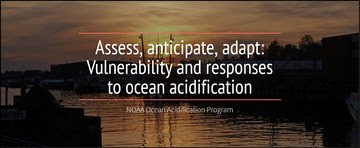
Story Map: Vulnerability to Ocean Acidification
In three U.S. regions, coupling ocean and social science data helps us understand coastal communities’ vulnerability to the impacts of ocean acidification. The combined data can equip communities and industries with the information they need to anticipate and adapt to acidification. Learn more in a new story map.
Southeast

Exempted Fishing Permit to Test Lionfish Trap – Open for Public Comment
By April 2, please submit your comments on an application for an exempted fishing permit from Salty Bones Fisheries. The applicant proposes to test various traps to harvest invasive lionfish from the Gulf of Mexico and South Atlantic federal waters. Sampling would occur during the closed season for spiny lobster, and only lionfish would be harvested under this permit.
Marine Mammal Protection Act Waiver for Select Louisiana Coastal ProjectsIn February, Congress passed the Bipartisan Budget Act of 2018, which included a requirement that the Secretary of Commerce issue a waiver of the Marine Mammal Protection Act moratorium and prohibitions for three projects in the Louisiana Comprehensive Master Plan for a Sustainable Coast. On behalf of the Secretary, NOAA Fisheries has issued the waiver.

Louisiana Trustees Finalize Barataria Strategic Restoration Plan
The Louisiana Trustee Implementation Group approved and released its Final Strategic Restoration Plan and Environmental Assessment for Barataria Basin, Louisiana. The plan considers a suite of restoration techniques and approaches to address the ecosystem-level injuries caused by the 2010 Deepwater Horizon oil spill.
Greater Atlantic
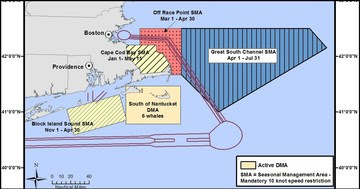
Watch Out for Whales Southwest of Nantucket
NOAA Fisheries established a voluntary vessel speed restriction zone 11 nautical miles southwest of Nantucket, Massachusetts, to protect an aggregation of six right whales sighted in the area on March 20. This zone is in effect through April 4.

Atlantic Large Whale Take Closure Reminders
NOAA Fisheries developed the Atlantic Large Whale Take Reduction Plan to reduce serious injuries and deaths of right, humpback, and fin whales due to entanglement in fishing gear. Get up to speed on the current and upcoming closures designed to protect these whales in regional waters.

Scallop Specifications – Open for Public Comment
By March 30, please submit your comments on a proposed rule to set management measures for the scallop fishery for the 2018 fishing year. The measures include opening new areas that will become available to scallop fishing through the Omnibus Habitat Amendment and developing accountability measures for three different flatfish stocks.
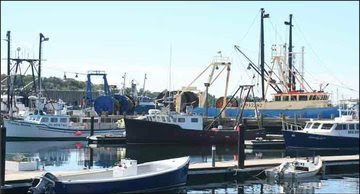

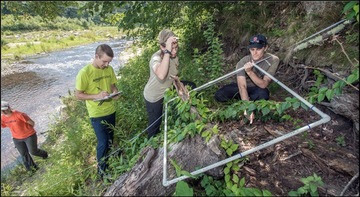
How Removing Dams Changes Local Vegetation
As we remove aging dams around the country, we return the pond-like reservoirs or impoundments they create to free-flowing rivers and streams. Resulting changes to water and sediment flow affect the plants that grew along the reservoir. NOAA’s Restoration Center is funding research to learn more about how wetland and riparian plant communities respond to dam removals.
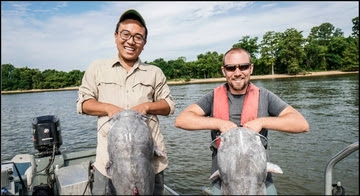
Bay Invaders: Blue Catfish Fishery
Voracious blue catfish have taken over the Chesapeake Bay area since their introduction to the James, York, and Rappahannock Rivers decades ago. The NOAA Chesapeake Bay Office has funded more than $1 million in research projects to learn more about the challenge they pose to Chesapeake ecosystems. Meanwhile, NOAA Fisheries and partners support the development of commercial and recreational fisheries that can help control the population.
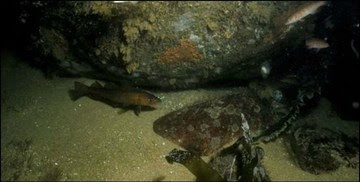
New Habitat Protections for Young Cod
To restore Atlantic cod stocks, we must protect not only the fish but also their habitats. NOAA Fisheries recently designated a new Habitat Area of Particular Concern for juvenile cod: rocky or vegetated habitats, and the sandy areas next to them, in coastal waters from Maine to Rhode Island. NOAA Fisheries will consult on the impacts of federally funded or permitted activities in the designated area.

Women’s History Month Interview Series
March is Women’s History Month, and the Northeast Fisheries Science Center has asked five scientists to share their journeys and advice for the next generation of women in science. This week, meet Nicole Charriere, a biological science technician for the Ecosystem Surveys Branch. She spends about 130 days a year at sea collecting important fisheries data to monitor Northeast fishery stocks.
|
|
Events
March 20–21
Public sessions of the Marine Recreational Information Program’s Access Point Angler Intercept Survey Calibration Workshop in Silver Spring, Maryland, and online.
April 2–10
North Pacific Fishery Management Council meeting in Anchorage.
April 2–18
Three public scoping meetings on bluefin tuna bycatch management measures, to be held in Louisiana, New Jersey, and Massachusetts.
April 4–23
Three free Protected Species Safe Handling, Identification, and Release workshops in New Jersey, North Carolina, and Massachusetts.
April 5
Free Atlantic Shark Identification Workshop in Norfolk, Virginia.
April 10–12
Mid-Atlantic Fishery Management Council meeting in Montauk, New York.
April 5–11Pacific Fishery Management Council meeting in Portland, Oregon.
April 16–20
Gulf of Mexico Fishery Management Council meeting in Gulfport, Mississippi.
April 17–19
New England Fishery Management Council meeting in Mystic, Connecticut.
Announcements
March 30
Applications due for 2018 student summer programs at Woods Hole Science Aquarium.
April 10
Applications due for Mid-Atlantic Fishery Management Council’s advisory panels.
April 13
Nominations due for 2018 Climate Adaptation Leadership Award for Natural Resources.
April 25
Applications due for the South Atlantic Fishery Management Council’s Scientific and Statistical Committee.
April 26
Applications due for 2018 Chesapeake Bay Office Fisheries Science grants.
Federal Register Actions
Visit regulations.gov for a list of only those actions open for public comment. Scroll search for National Oceanic and Atmospheric Administration.
For a list of all daily actions, check the Federal Register online.
|
|

No comments:
Post a Comment